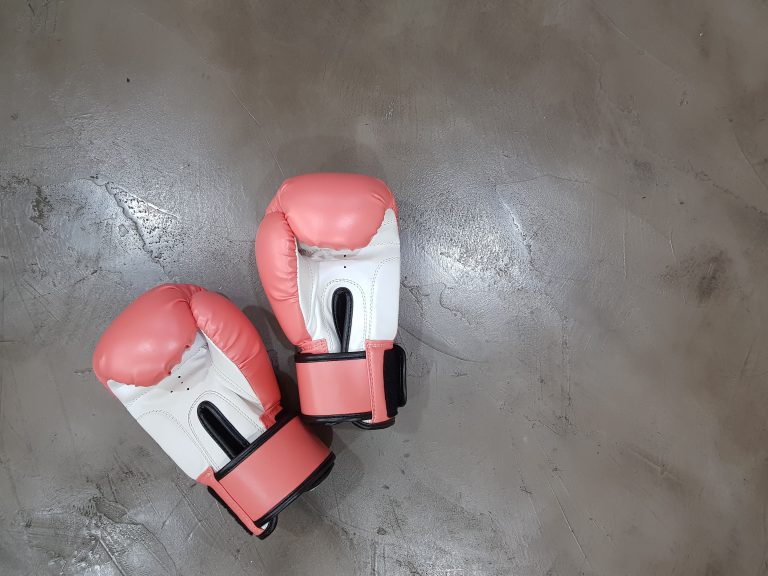Karate Brown Belt Levels: What You Need to Know
Karate is an ancient martial art that originated in Ryukyu Kingdom, now known as Okinawa, Japan. As a practitioner of karate, you know that karate belts represent the level of expertise a person has attained in the martial arts. From white belt to black belt, there are many levels of proficiency that a karate student can achieve. In this blog post, we are going to discuss the karate brown belt levels and what you need to know about them.
What is a Brown Belt in Karate?
A brown belt is an intermediate level belt in karate ranking systems. Brown belt signifies that a student has acquired a high level of skills and knowledge in karate techniques, stances, footwork, and attitudes.
What are the Karate Brown Belt Levels?
The karate brown belt levels vary between martial arts schools; however, they typically follow a standard ranking system. The following is a commonly used karate brown belt level system:
1. Brown Belt (3rd Kyu)
The first brown belt level is referred to as 3rd Kyu. This indicates that the student has already been training for a long time and has grasped the basics of karate techniques. Also known as ’senior brown belt,‘ the 3rd Kyu requires a student to pass a test that includes basic techniques, kicks, punches, katas (a sequence of movements as though someone is fighting several opponents at once), and sparring.
2. Brown Belt (2nd Kyu)
The second brown belt level, also known as 2nd Kyu, signifies that the student has reached an intermediate phase of their training. Students at this level demonstrate great control, focus, and precision in their techniques. At this level, students are expected to know more katas and be able to perform them at a higher level. Sparring continues to be a large component of the testing.
3. Brown Belt (1st Kyu)
The final stage of the brown belt level is known as 1st Kyu. At this stage, the student has become an advanced practitioner of karate. The student is tested on their ability to demonstrate correct techniques; demonstrate a thorough understanding of the katas, their meanings and applications; demonstrate effective use of distance, speed, and timing in sparring, self-defense, and weapons application; as well as the mental and spiritual principles of karate.
Techniques Required for Brown Belt
Depending on the different styles of karate, the techniques required for students to earn a brown belt may differ slightly. However, some commonly required techniques for brown belt tests are:
• Five basic kicks (front kick, side kick, roundhouse kick, back kick, and hook kick)
• Five basic punches (jab, reverse punch, hook punch, uppercut, and knife-hand strike)
• At least three katas of good quality performance
• Effective self-defense techniques
• A thorough understanding of the five karate principles (focus, power, speed, technique, and control)
Tips for Passing Your Brown Belt Exam
Once a student is ready to take their Brown Belt Exam, they must be able to demonstrate their proficiency in all the required areas. Here are a few tips for preparing for and passing your Brown Belt Exam:
1. Practice, practice, practice! Consistent training, practice and repetition will improve your karate skills and prepare you for your exam.
2. Be focused during training to improve your mental toughness.
3. Start building endurance and conditioning to perform at the mandatory requirements with great ease.
4. Pay attention to feedback from your sensei and other martial arts students in the dojo.
5. Stay mentally and emotionally prepared for the examination by trying to remain calm and collected before and during the test.
Understanding Karate Brown Belt Levels: Answers to Frequently Asked Questions
Karate is not just a sport or martial art, but a way of life. It’s a discipline that helps individuals boost their physical and mental strength, while also developing mental focus and self-discipline. Karate is divided into different levels, and one of the most important levels is the brown belt. In this article, we will answer some frequently asked questions about karate brown belt levels to help you understand its significance better.
What is Karate Brown Belt Level?
A brown belt is one of the intermediate levels of karate whereby the practitioner has gained mastery over many techniques and has developed an understanding of the karate philosophy and etiquette. It’s the level between intermediate and advanced ranks, making it a critical step in a practitioner’s karate journey. The brown belt is also a bridge to higher levels of karate, such as black belt levels.
How Many Brown Belt Levels are there?
Typically, there are three brown belt levels:
1. Third Kyu (Brown Belt Level 1)
The third kyu level is the first brown belt level. Students at this level will have learned numerous techniques like stances, strikes, and kicks, among others. Practitioners at this level are expected to have a good understanding of karate philosophy and etiquette.
2. Second Kyu (Brown Belt Level 2)
The second kyu level is the second brown belt level. Students at this level are expected to have a high degree of physical proficiency in executing karate techniques. They’re expected to have good timing, body control, and techniques mastery.
3. First Kyu (Brown Belt Level 3)
The first kyu level is the highest brown belt level. Students at this level are expected to exhibit a high degree of proficiency in executing karate techniques. In this level, practitioners are expected to be well-rounded, with a good understanding of karate philosophy, etiquette, and mastery of numerous techniques.
How Long Does it Take to Advance to Karate Brown Belt Levels?
Advancing to the brown belt level in karate depends on several factors, such as the training program and frequency, among others. In general, attaining the brown belt level can take between 2-5 years of dedicated practice and training. At this level, the student is expected to have shown significant progress, with a high level of commitment and discipline.
What are the Benefits of Attaining Karate Brown Belt Levels?
Attaining brown belt levels in karate has several benefits, including:
1. Increased Confidence
Through regular training and dedicated practice, a student at the brown belt level becomes more confident in their techniques and Karate skills, which helps in enhancing their overall self-confidence.
2. Develops Self-Discipline
Karate training is highly disciplined, and this is carried on throughout the different levels, including the brown belt level. Practitioners at this level are expected to be highly disciplined and self-motivated, which helps develop strong self-discipline.
3. Improves Focus
Karate training requires intense focus and concentration. Practitioners at the brown belt level are expected to have good mental focus and awareness, which helps them to sustain focus both inside and outside of the dojo.
What Challenges should you Expect at the Brown Belt Level?
While every student’s experiences are different, there are a few challenges that most people face when advancing to the brown belt level. Such challenges include:
1. Injury
As students get to intermediate levels, their physical training also intensifies, which can lead to potential injuries. It’s important to listen to your body and take breaks when you need them.
2. Maintaining Motivation
At the brown belt level, it’s easy to get comfortable with your progress, which can lead to a decline in motivation. To avoid this, it’s important to set new and challenging goals for yourself.
3. Perfecting Techniques
As you advance through the brown belt levels, perfecting and refining techniques becomes more critical. Practitioners at this level are expected to have good timing, body control, and techniques mastery.
Final Thoughts
The brown belt level is an intermediate rank in karate that requires dedication, discipline, and commitment. Mastery of karate techniques and philosophy is essential to progress through the three brown belt levels successfully. While it’s important to embrace the physical aspects of karate, it’s also essential to focus on the mental and philosophical aspects, which contributes to the development of a well-rounded karate disciple. By understanding the significance of the brown belt levels in karate, you can push yourself to reach higher levels of excellence as a karate practitioner.
Karate Brown Belt Levels: A Step-by-Step Guide
If you have been practicing karate for a while and have achieved the level of a brown belt, you should be proud of your accomplishment. Brown belt is the second-highest belt level in karate, and it represents a significant step towards obtaining a black belt. In this guide, we will walk you through the brown belt levels, what they represent and how to prepare for each level.
What Do the Brown Belt Levels Represent?
A brown belt symbolizes a student’s transition from intermediate to advanced levels of training in karate. It is at this point that a student begins to gain a deeper understanding of the art and the techniques that they have learned up to this point. The brown belt level represents the last phase before earning a black belt, where a lot of focus is placed on perfecting the karate techniques and applying them with precision during sparring.
Preparing for the Brown Belt Levels
To prepare for the brown belt levels, it is important to continue to practice regularly and consistently. You should also focus on improving your overall physical fitness by incorporating strength and cardio training into your routine. Additionally, it is essential to work on your mental toughness and focus, as these are critical components of advancing your karate skills.
The Brown Belt Levels
Brown Belt Level 1
At this level, you are required to demonstrate proficiency in all karate techniques, including basic strikes, kicks, and blocks. You should also have excellent timing and control when blocking, understanding when to use which technique in different situations. Sparring drills become more challenging, testing your reflexes and ability to react quickly while also maintaining efficient technique.
Brown Belt Level 2
This level requires a deeper understanding of how to use karate techniques in various settings, including self-defense situations, free sparring, and formal matches. An increased focus on physical conditioning and endurance is also essential, requiring systematic body-strengthening exercises, such as push-ups, squats, and sit-ups. This level also involves more complex sparring, with an emphasis on timing and distancing.
Brown Belt Level 3
The highest level of brown belt requires mastery of advanced techniques, including grappling, joint locks and throws, and advanced sparring. You should now have a strong understanding of how to apply different techniques, creating quick and precise movements that have maximum impact. This level also requires mastery of kata, a set of choreographed movements that improve body awareness, balance, and flexibility.
Conclusion
Karate brown belt levels represent a significant milestone in a student’s karate journey, demonstrating their dedication and consistent effort towards the art form. It requires hard work, discipline, and a deep commitment to improving both physical and mental strength. With regular practice and dedication, you can become a proficient brown belt and continue to advance towards earning a black belt.
Inhaltsverzeichnis





